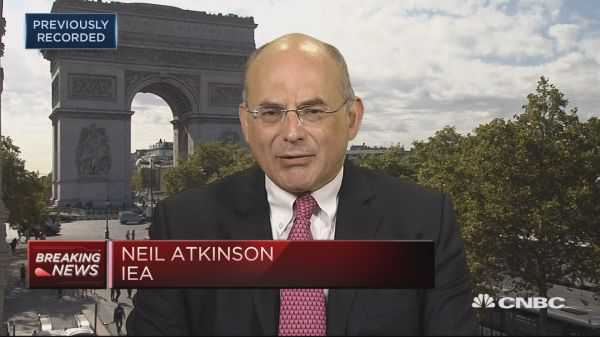Iran sanctions may disrupt oil supply
04 November, 2018

Midnight on Sunday will mark a dividing line in the world of oil. Beyond that point, anyone unloading a tanker from Iran risks the full wrath of the U.S. government.
While the United States softened its crackdown on the Middle East’s third-biggest oil producer on Friday, allowing some trade to continue, exports are already slumping. Shipments have plunged 37 percent since U.S. President Donald Trump announced that he’d reimpose sanctions, and once those penalties kick in on Nov. 5, the overall supply disruption could become the biggest since Libya erupted in civil war at the start of the decade.
“Iran’s oil exports are falling rapidly, and perhaps more and more in the weeks to come,” Fatih Birol, executive director at the International Energy Agency, said in a Bloomberg television interview.
The United States will grant partial exemptions, known as waivers, to eight governments on condition that any purchases from Iran are at “greatly reduced levels,” Secretary of State Michael Pompeo said on Friday. But the Trump administration ultimately seeks to squeeze Iran’s sales towards “zero” — potentially leaving a gap that even major producers like Saudi Arabia would struggle to fill.
U.S. oil futures climbed to a four-year high near $77 a barrel last month on growing concerns there could be a shortage as sanctions bite deeper.
Analysts don’t expect a complete halt, but there’s a growing consensus that Trump’s tough stance means crude exports will plunge further than during a previous round of sanctions under Barack Obama’s administration in 2012. Back then they were sliced in half to 1 million barrels a day, according to the IEA, which advises industrialized countries on energy policy.
This time, 1.1 million barrels a day have already been cut from Iran’s shipments — a combination of crude and a light oil called condensate that was spared from curbs in 2012 — according to data compiled by Bloomberg. Production hasn’t fallen as much as some output is going into storage. About 1.76 million barrels a day were exported in October, more than is pumped from the North Sea.
After Trump withdrew from the nuclear deal with Iran and reimposed sanctions, European governments vowed to try and preserve the agreement and find ways to continue trading. The region’s intake of Iranian crude has nonetheless wilted. Companies like Total SA and Royal Dutch Shell Plc have halted purchases because the risk of being frozen out of the U.S. financial system is simply too great.
China — the leading importer of Iranian crude — is still in discussions with the United States on terms, but is among the eight countries permitted to keep buying Iranian oil, according to two people familiar with the discussions.
Iran says it’s confident sales will hold above 1 million barrels a day. Indeed, with U.S. gasoline prices still relatively high and midterm elections just days away, Trump has some incentive to soften his offensive.
“The U.S. will take its foot off the gas on sanctions and ease pressure in getting to zero right at the start in order to not cause a rise in oil prices in the lead-up to elections,” said Robin Mills, head of Dubai-based consultant Qamar Energy. “Then they will pick up pressure towards the end of the year to cut Iran’s sales.”
The impact of the sanctions has already been cushioned by other oil producers, notably some of Iran’s counterparts in the Organization of Petroleum Exporting Countries. Saudi Arabia has increased production by 780,000 barrels a day since April, according to data compiled by Bloomberg.
The extent to which the kingdom can keep this up in the coming months depends on how many idle oil fields it’s able to tap. The IEA sees Saudi Arabia having about 1.3 million barrels a day of spare capacity. Others such as Russia, the United Arab Emirates and Iraq could potentially squeeze out a little more as well.
If the United States does in the end follow through on its strongest threats, choking off Iranian supplies entirely, that spare capacity could be completely exhausted, leaving almost nothing left to cover unexpected disruptions in other trouble spots.
“If there’s almost no cushion left and something happens in Libya or Nigeria, then you’re stuck,” said Societe Generale’s Wittner. “That’s where the market could see a big price reaction.”
TAG(s):
